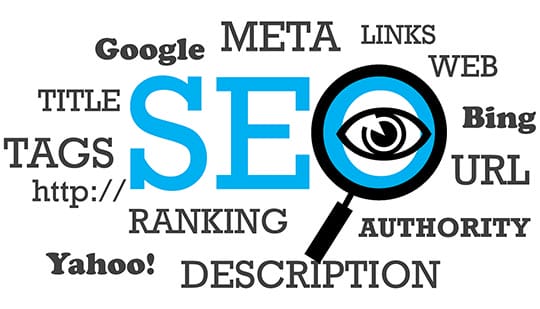Search Engine Optimization is so widely used and referred to in the age of digital marketing that it has become a buzzword. Search Engine Optimization, better known as SEO, is the way in which businesses use keywords to ensure that Internet search bots recognize their websites. Many business owners are increasingly turning to differentiation to ensure that their websites are noticed. Semantic searches are one way to differentiate their websites!
Semantic searches explained:

When an Internet search engine bot examines a website and its associated pages in search of the material web surfers will be looking or the context of all possible queries and word relationships, it is engaging in a semantic search. Semantic searches (ref. Moz) are the process of the Internet search engine bot examining, analyzing and understanding the content on a webpage in the same way that a human would!
Recommended for you: The Ultimate Guide to Choosing the Best Domain Name for Your Brand.
Semantic searches in action:
Suppose an Internet search engine bot looked at a website about evolution and examined its pages. Further suppose that it came across the following sentence: “Did you know that humans co-existed with other species of humans during the last ice age?” Suppose the second sentence said, “there were at least 10 of them in existence then!” The Internet search engine bot would use human logic, inference, and connection of word relationships to understand that the second sentence referred to the different species of humans during the last ice age. The bot would then look for keywords and long phrases which would correspond to common queries surfers would enter into major search engines to ensure that the search engine results contained information that answered the initial queries and matched them as well.

The magic of semantic searches does not end there! When Google’s search engine bot uses the semantic search process, it is able to distinguish between the different people, places, and things the surfer is referring to when he or she initiates his or her initial search. The search engine bots analyze user search history, location, the user’s overall search history, and his or her variations in spelling certain keywords and long phrases.
A good example which explains this would be if a user searches for different climatic regions in the world, and then types in the keyword ‘temperate’ after conducting 20 related searches. The search engine bot would understand that the user wanted information regarding a certain type of climate returned and would look for the information accordingly. The search engine bot would connect the 20 previous searches on climate with the word ‘temperate’ and would know what to look for on web pages and sites. This search process gives search engine bots, which are in essence, artificial intelligence, human capabilities!
The many steps involved in semantic searches:

As one would guess, because semantic searches involve giving artificial intelligence human capabilities in terms of logic and cognitive reasoning, it is an involved and complex process with many steps. They are explained below.
Step 1: The knowledge graph
 The knowledge graph plots the keywords and long phrases that the user types in according to relevance and meaning. The search engine bot then returns matching information. This graph was first emphasized by Google as a way of searching for entities and concepts instead of information that contains certain keywords and long phrases. Google ‘emphasized things and not strings.’ Its popularity soared as it became one of the most widely used search engines in the world because of the accuracy of the information it returned!
The knowledge graph plots the keywords and long phrases that the user types in according to relevance and meaning. The search engine bot then returns matching information. This graph was first emphasized by Google as a way of searching for entities and concepts instead of information that contains certain keywords and long phrases. Google ‘emphasized things and not strings.’ Its popularity soared as it became one of the most widely used search engines in the world because of the accuracy of the information it returned!
The knowledge graph later evolved into a huge database containing volumes of information users commonly search for. The information pertained to certain widely entered in keywords and long phrases. Google relies on this database to return information that users need and find useful. The information is classified according to ‘things’ and each thing has properties.
You may also like: 7 Important SEO Mistakes You Should Avoid in 2019.
Step 2: Hummingbird
 Hummingbird is Google’s brainchild. Its methodology is five years old, and it uses an algorithm which has Internet search engine bots return pages containing valuable information which pertains to the meaning behind the keywords and long phrases the user has entered. Using this example, a website that talked about dinosaurs, their evolution, how they lived and the ways in which they impacted their natural environment will actually appear in Google’s internet search engine results. this may not necessarily be the case with websites which just mention the word ‘dinosaurs’ many times without really providing much if any information regarding them!
Hummingbird is Google’s brainchild. Its methodology is five years old, and it uses an algorithm which has Internet search engine bots return pages containing valuable information which pertains to the meaning behind the keywords and long phrases the user has entered. Using this example, a website that talked about dinosaurs, their evolution, how they lived and the ways in which they impacted their natural environment will actually appear in Google’s internet search engine results. this may not necessarily be the case with websites which just mention the word ‘dinosaurs’ many times without really providing much if any information regarding them!
Step 3: Rank Brain
 Rank Brain is an artificial intelligence that is capable of learning in the same way that humans do. It plays a key role in semantics searches because it analyzes the relevance of website information in relation to queries and ranks them accordingly. It is an intent driven technology which learns as humans do.
Rank Brain is an artificial intelligence that is capable of learning in the same way that humans do. It plays a key role in semantics searches because it analyzes the relevance of website information in relation to queries and ranks them accordingly. It is an intent driven technology which learns as humans do.
The following steps are helping ensure that semantic searches help place companies whose websites have valuable and relevant information highly on search engine results according to the quality of their information!
This article is written by Manish Kumar. He works as a content marketing head at Tangensys, a leading SEO company India. He has been working in this field for some time now and knows how to balance creativity and technical side of content. He loves making new content marketing strategies for his customers.





